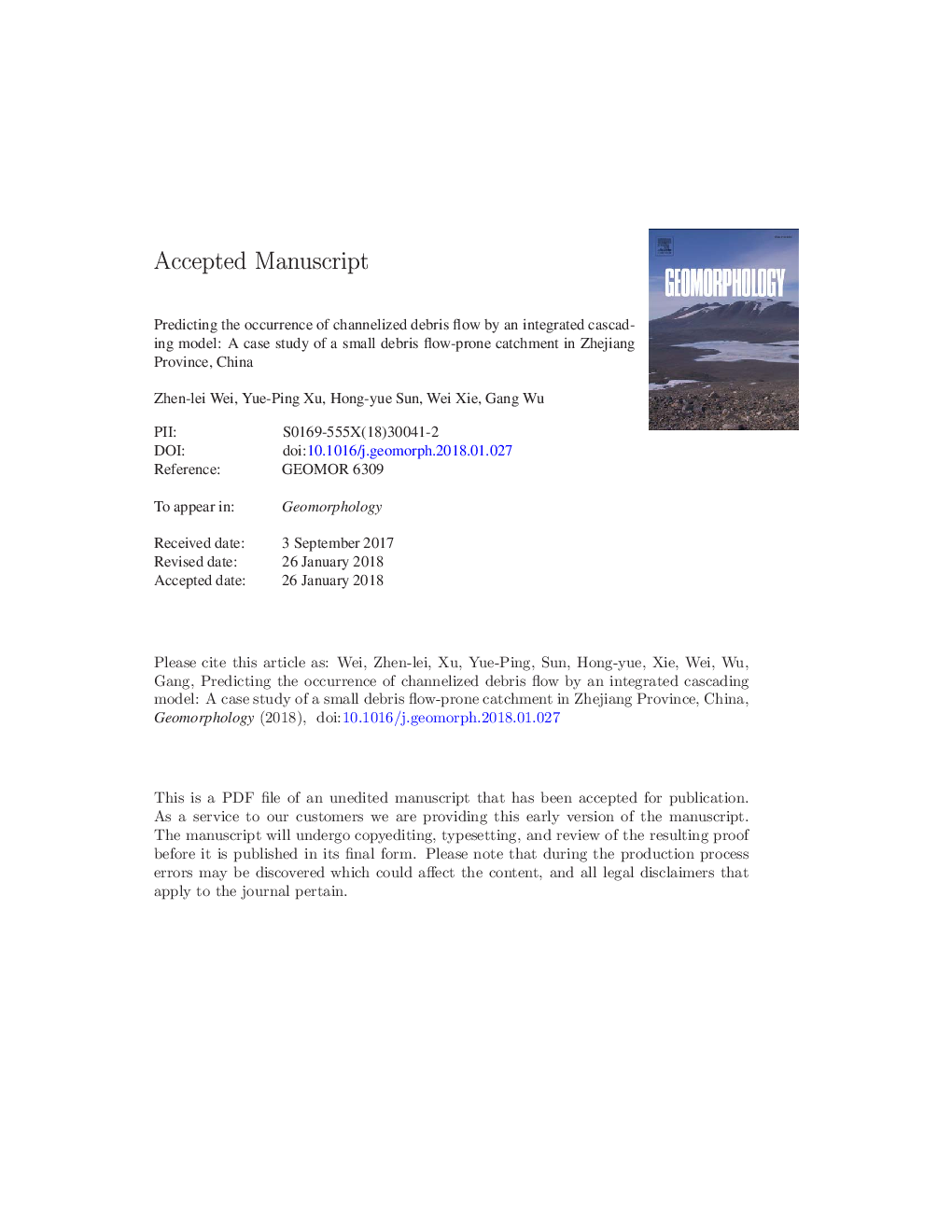| Article ID | Journal | Published Year | Pages | File Type |
|---|---|---|---|---|
| 8908074 | Geomorphology | 2018 | 51 Pages |
Abstract
Excessive water in a channel is an important factor that triggers channelized debris flows. Floods and debris flows often occur in a cascading manner, and thus, calculating the amount of runoff accurately is important for predicting the occurrence of debris flows. In order to explore the runoff-rainfall relationship, we placed two measuring facilities at the outlet of a small, debris flow-prone headwater catchment to explore the hydrological response of the catchment. The runoff responses generally consisted of a rapid increase in runoff followed by a slower decrease. The peak runoff often occurred after the rainfall ended. The runoff discharge data were simulated by two different modeling approaches, i.e., the NAM model and the Hydrologic Engineering Center-Hydrologic Modeling System (HEC-HMS) model. The results showed that the NAM model performed better than the HEC-HMS model. The NAM model provided acceptable simulations, while the HEC-HMS model did not. Then, we coupled the calculated results of the NAM model with an empirically based debris flow initiation model to obtain a new integrated cascading disaster modeling system to provide improved disaster preparedness and hazard management. In this case study, we found that the coupled model could correctly predict the occurrence of debris flows. Furthermore, we evaluated the effect of the range of input parameter values on the hydrographical shape of the runoff. We also used the grey relational analysis to conduct a sensitivity analysis of the parameters of the model. This study highlighted the important connections between rainfall, hydrological processes, and debris flow, and it provides a useful prototype model system for operational forecasting of debris flows.
Related Topics
Physical Sciences and Engineering
Earth and Planetary Sciences
Earth-Surface Processes
Authors
Zhen-lei Wei, Yue-Ping Xu, Hong-yue Sun, Wei Xie, Gang Wu,
